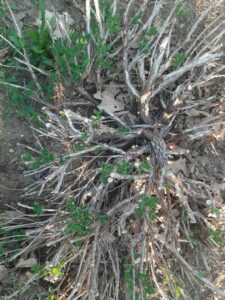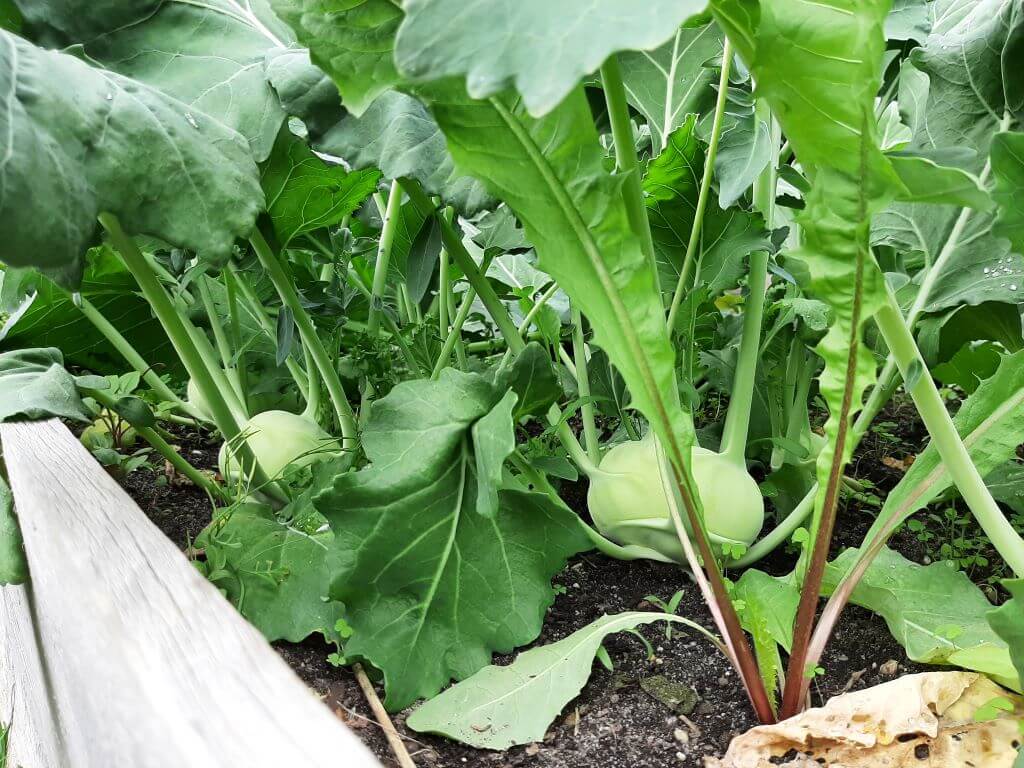I must confess that I have no idea when to pick sugar snap peas. I don’t want to pick them too soon because then they’ll just taste like grass (or what I imagine grass would taste like had I ever eaten it). But I don’t want to leave them on the plant too long, either, and risk adversely affecting production. The ones for sale in the grocery store are a little puffier than the one in the (second) picture below. So I’ll leave that one where it is for another day or two.

Plants starting to flower 
Peas beginning to grow
These plants were direct seeded in the garden on March 23 with Ferry Morse seeds. They sprouted fairly quickly, in about a week. These pictures were taken on May 23, so the “62 days to harvest” information on the seed packet is spot on. The seeds were not inoculated but the bed was amended with compost and a general purpose organic fertilizer before planting. I only had room for one eight-foot row, but I have lots of seeds left so if the yield is good I’ll plant more in the fall.
If I remember correctly, the plants only produce for a few weeks. They don’t like the heat. Fingers crossed for a bumper crop before summer sets in. We’ll update in a few weeks.
June 21: I ripped the plants out today to make room for the sweet potatoes. The total yield from my eight foot row was 3.23 pounds. I don’t know if that’s good or not. I do know that sugar snap peas cost about $5.00 per pound in the grocery store, so I grew over $15.00 worth of peas from a $1.78 packet of seeds. Not a bad return on investment.

















